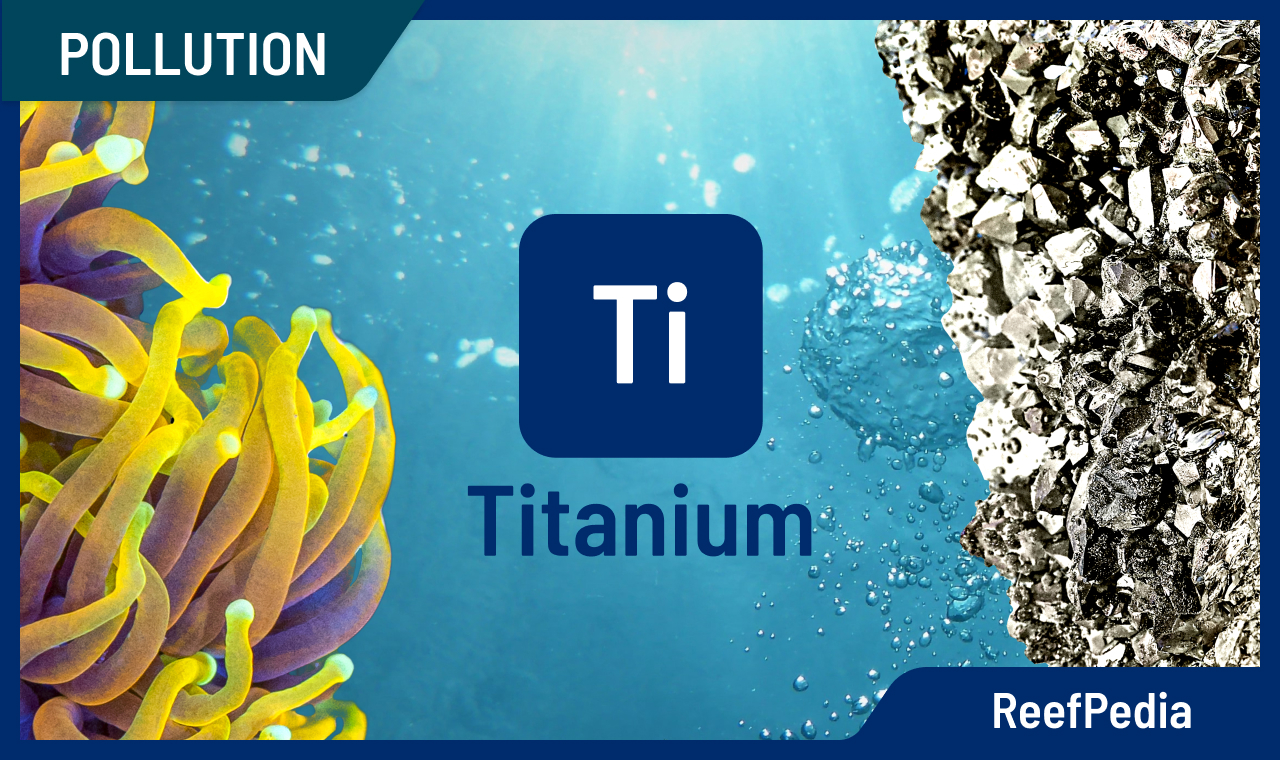What is TITANIUM (Ti)?
Titanium (Ti, Latin titanium) is a light metal with a greyish colour. It belongs to the group of transition metals*. It occurs in the Earth’s crust in an amount of approximately 0.61%, mainly in the form of minerals such as ilmenite, rutile and titanite, which are widespread throughout the Earth.
Titanium forms chemical compounds in which it occurs most frequently in the +IV oxidation state (titanium dioxide; TiO2) and less frequently in the +III oxidation state (titanium nitride; TiN).
The importance of titanium in seawater
Titanium is a metal that can have a negative impact on marine animals. Its presence in a reef tank is an indication of its contamination by this element.
Risks associated with excess titanium in seawater
High levels of titanium in seawater are undesirable, although the exact effects on marine animals are not known.
How to protect your aquarium?
Check Titanium content regularly and keep it at a non-detectable level – 0 μg/L. The absence of titanium in seawater ensures healthy animals and beautiful colouration.
The most accurate and reliable method for determining titanium is ICP-OES analysis. The Inductively Coupled Plasma Optical Emission Spectrometry (ICP-OES) technique is the most accurate analytical method for analysing the elemental composition of seawater.
Recommendations
In order to provide the right level of titanium in your aquarium, you should test it regularly and ensure that it is at the right level.
If titanium levels are above 0 µg/l, this can lead to health problems in corals and other animals and even death. The most common reasons for exceeding the recommended titanium level:
- contaminated salt,
- metal elements containing this element,
- hand creams (their residues on the hands can get into the aquarium seawater)
Find and eliminate the cause of the problem and lower the value of this parameter in the water. Carry out up to 6 water changes. It is recommended to change about 15% of the aquarium water volume during each change until the recommended value of this parameter is reached. The water prepared for the change must have the correct target salinity level. Use salts with the correct parameters and composition suitable for the ICP test. You can also use phosphate absorbers based on alumina and iron.
*Transition metals- a group of chemical elements in the periodic table, including side groups of the periodic table, i.e. groups 3-12.
Literature:
- https://pl.wikipedia.org/wiki/Tytan_(pierwiastek)
- https://www.faunamarin.de/en/knowledge-base/titanium/
About author

Magdalena Metzler
Privately, I am a mother and a lover of nature and sport. My main interest is quantum chemistry, which hides a whole lot of unsolved mysteries and connections, which is extremely exciting from a scientific point of view.
In my scientific career, I have conducted international projects focused on innovative solutions for many branches of business, e.g. automotive, construction, and now, of course, marine aquaristics.
Working at Reef Factory gave me a passion for marine aquaristics, which I can develop every day, building a chemistry department and creating products that will help aquarists take care of tanks and ensure the highest safety of animals.
One of the most exciting memories of working at Reef Factory is the commissioning of the ICP-OES spectrometer, which analyzes the elemental composition of seawater. The method of analysis in ICP is based on an analytical technique, which is a combination of my passion for quantum chemistry and marine aquaristics.
I hope you find my articles on ReefPedia interesting and helpful! Happy reading :))
Magda

